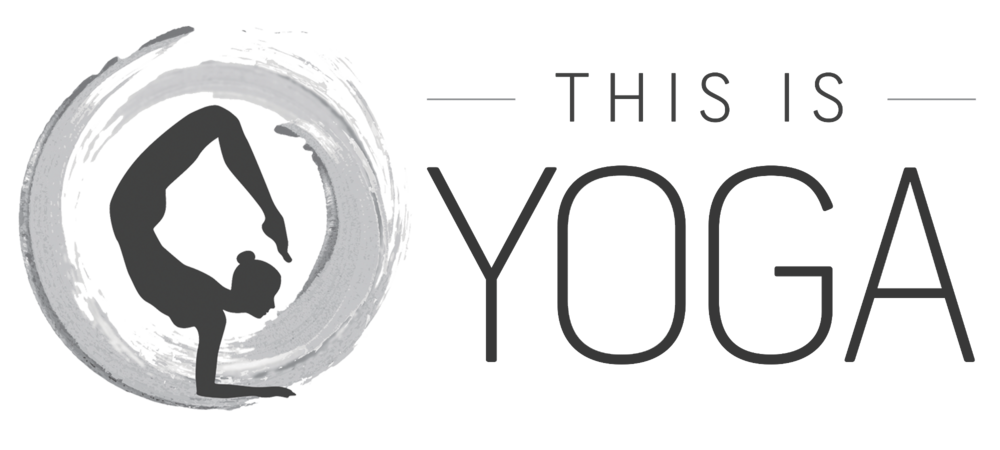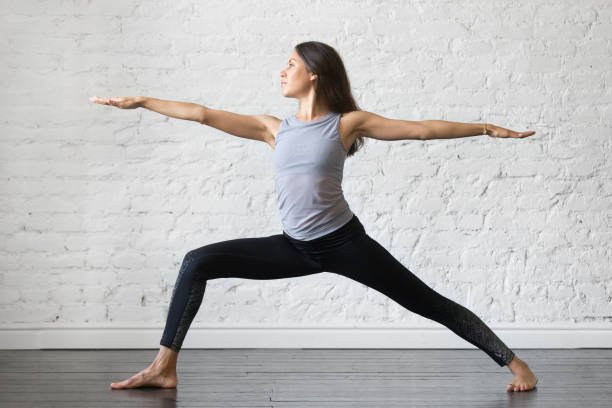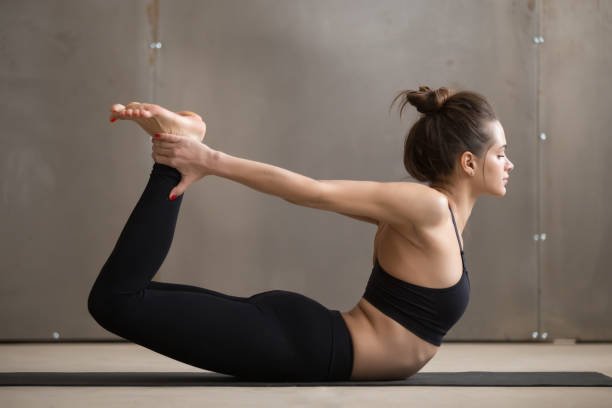You may have come across the seven chakras; maybe it was in yoga class, or during a meditation course. However, you might not know exactly what they are or how to work productively with your chakras. Chakras are energy centers in the subtle body that distribute the flow of prana or energy throughout your body. Starting at the base of the spine and working up to the crown of your head, these chakras influence your emotional and physical health.
Understanding the role and purpose of each chakra is a crucial first step in balancing your chakras and establishing a harmonious flow of energy. All of the seven chakras are interconnected; balancing one chakra will create change in the others. If you are lacking control in your life or struggling with self-confidence, turn your attention and become acquainted with your solar plexus chakra.
The Solar Plexus Chakra
Located in the upper abdomen two inches above the navel, the solar plexus chakra or manipura is the third of your seven chakras. The Sanskrit name translates to “shining gem,” a fitting name for this chakra. This chakra is the core of your personality and identity. When balanced, this chakra allows your authentic self to shine brightly.
The solar plexus chakra is located above the navel and extends up to the sternum. This forms your deepest connections with willpower, self-discipline, and self-esteem. The solar plexus chakra embodies your unlimited potential to transform thought or inertia into action.
The solar plexus chakra is the source of your personal power and confidence. This enables you to discover who you truly are and let your authenticity flourish. A balanced solar plexus chakra gives you the ability to overcome fear, master your thoughts, and make conscious choices.
The solar plexus chakra helps grow your confidence and vitality. This empowers you to follow your true path and create the life you want. When balanced, the solar plexus chakra allows you to seize your personal power, develop your authentic self, and take responsibility for your life.
Key Characteristics of the Solar Plexus Chakra
Identity — As the core of your personality and identity, the solar plexus chakra allows you to bloom into your authentic self and discover who you truly are.
Personal Power — The solar plexus chakra is the source of your personal power. This empowers you to take control of your thoughts, emotions, and actions.
Willpower — Working with your personal power, your solar plexus chakra gives you the willpower and self-discipline to get things done.
Confidence — The solar plexus chakra is responsible for your self-esteem and how you view yourself. It also gives you the confidence to make decisions and feel self-assured.
Intention & Action — Your solar plexus chakra gives you the power to transform your thought into action.
Solar Plexus Chakra Imbalance
The chakra system distributes the flow of prana or energy throughout your subtle body. Stress, illness, emotional upset, or conflict all can cause blockages or imbalances in your chakra system. All of the seven chakras are interconnected; when one chakra experiences a blockage or imbalance, it affects all the others. This disruption of energy can cause your mind, body, and spirit to suffer.
When the solar plexus chakra is imbalanced, it can bring a lack of control in your life as well as a loss of identity. Suppose you are working towards becoming a leader, improving your self-esteem, or trying to discover your authentic self. In that case, it is important that you open and balance your solar plexus chakra.
Underactive Solar Plexus Chakra
When a chakra is underactive, it means that it is experiencing a blockage or is not distributing the flow of energy, which can affect your overall well-being.
When your solar plexus chakra is underactive, you may be experiencing a sense of lack of control and purpose in life. When the solar plexus chakra becomes blocked, it often leads to emotional problems, ranging from feeling powerless to self-doubting.
How to recognize if your solar plexus chakra is underactive
Lack of Confidence
Low Self-Esteem
Indecisive
Helplessness
Lack of Purpose
Overactive Solar Plexus Chakra
When a chakra is overactive, it means that it is distributing too much energy. It is working in overdrive and bringing imbalance to the chakra. When your solar chakra is overactive, it affects your overall well-being.
Too much of anything is never good for you. When your solar plexus chakra is overactive, you may be experiencing issues such as desiring control over others and judging too harshly. When the solar plexus chakra is overwhelmed with energy, it can overstimulate your system. You may feel especially critical and stubborn.
Signs of an overactive solar plexus chakra
Desire for control
Overly Critical
Excessive Stubbornness
Anger and Aggression
Judgmental
How to Balance the Solar Plexus Chakra
Chakra balancing is the process of restoring the harmonious and balanced flow of prana or energy throughout the body. Your chakras are in constant fluctuation. Practicing chakra balancing and aligning is a regular and sometimes daily activity to explore. But how do you balance your solar plexus chakra?
There are many different ways to restore balance to your chakras. What works for you might not work for another. Make sure you find a way that works for you. Listen to your body and find the way that makes you comfortable.
Ways to Balance Your Solar Plexus Chakra
Try new things
Spend time in the sun
Yoga for Solar Plexus Chakra
Meditation for Solar Plexus Chakra
Solar Plexus affirmations
Aromatherapy for Solar Plexus Chakra
Solar Plexus crystals
New Experiences
The solar plexus chakra is responsible for helping you discover your authentic self and find your true purpose in life. Getting outside of your comfort zone and experiencing new hobbies, cultures, and ideas can help open and bring balance to your solar plexus chakra.
Get Outside
The solar plexus chakra is highly influenced by the element of fire. Getting outside on sunny days can help open and restore balance to your third chakra. Taking a walk, meditating, or simply sunbathing can allow your solar plexus energy to flow.
Yoga for Solar Plexus Chakra
Physical activity can be stimulating for your solar plexus chakra; yoga can particularly helpful in bringing balance to your solar plexus chakra. Yoga positions that focus on core strength are ideal for the solar plexus chakra. Below are yoga positions and movements that will help connect you to the energy of the solar plexus chakra.
Full Boat Pose | Paripurna Navasana
Firefly Pose | Tittibhasana
Bharadvaja’s Twist | Bharadvajasana I
Sun Salutations | Surya Namaskar
Bow Pose | Dhanurasana
Mediation for Solar Plexus Chakra
Meditation plays an important role in restoring balance to your chakras. Chakra meditation techniques are similar to traditional meditation techniques but focus on a specific area of the body. Below is a simple meditation technique to help aid in balancing your solar plexus chakra.
Sit with your shoulders back and spine straight. Relax your muscles as you close your eyes and breathe deeply. Inhale through your nose and exhale through the mouth.
Focus your attention on the location of your solar plexus chakra: your abdomen, a few inches above the navel.
Since the solar plexus chakra is tied to the color yellow, imagine a yellow glow above your navel, slowly expanding to the bottom of your rib cage and making the whole area warm and relaxed. Rest in this sensation for 3-5 minutes.
When you are ready, slowly open your eyes. You may follow with positive affirmations.
Solar Plexus Chakra Affirmations
Affirmations are a positive way to heal negative programming that can be embedded in your subtle body. When balancing your solar plexus chakra, practice saying these phrases to yourself:
I love and accept my house
I am authentic
I feel my own powers
I am free to choose in any situation
I direct my own life
Aromatherapy for Solar Plexus Chakra
Aromatherapy can be a powerful and simple tool for opening and balancing your solar plexus chakra. Use essential oils with balancing aromas that promote feelings of confidence, courage, and motivation. Our Solar Plexus Chakra Essential Oil Blend is designed to aid in balancing and opening your solar plexus chakra. Apply our Solar Plexus Chakra Blend to your abdomen, two inches above the navel.
Solar Plexus Crystals
Each chakra is influenced by unique stones and their energetic properties. The solar plexus chakra is highly influenced by tiger’s eye. When balancing your solar plexus chakra, meditate with tiger’s eye or carry the stone with you to let the energetic properties help restore balance to the chakra. Our Roll-On Solar Plexus Chakra Essential Oil Blend has a tiger’s eye rollerball to aid in balancing your solar plexus chakra.






